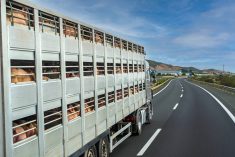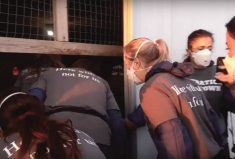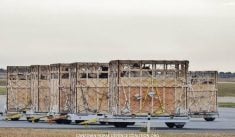In part two of this look at key global developments, University of British Columbia animal welfare expert Dr. David Fraser highlights an innovative effort gaining steam in Canada, along with European and South American progress.
On the home front, a key big-picture development that also promises to hold substantial profile on the global radar is the activity of Canada’s own National Farmed Animal Health and Welfare Council.
This group, a mix of government and industry representatives and experts, was formed as an advisory council to the Federal-Provincial-Territorial Regulatory Assistant Deputy Ministers of Agriculture Committee. It has focused on co-ordinating the development of a national strategy on all aspects of farm animal health and welfare.
Read Also

Pig transport stress costs pork sector
Popular livestock trailer designs also increase pig stress during transportation, hitting at meat quality, animal welfare and farm profit, Agriculture and Agri-Food Canada researcher says
The original national strategy document, released in 2009, focused heavily on animal health. The new document proposes a new strategy specifically for farmed animal welfare. It was released in December 2012 at the forum hosted by the council in Ottawa.
The council is a major connection point between industry and government on the health and welfare of production animals.
“The idea behind the formation of the council was to have a high-level steering group to advise governments and industry on the implementation of national strategies for farm animal health and welfare,” says Fraser, who is a member of the council. “The welfare document represents two years of discussion and consultations. How that is received will have a strong bearing on how Canada will approach national co-ordination on this issue.”
FAW interest expanding
Less specific but equally important to these developments is a noticeable trend of increasing participation in livestock welfare initiatives and progress by parts of the world not typically considered hot spots of farm animal care innovation.
A couple of quick examples include the rise in participation by eastern European countries in programs such as the AWARE initiative, and by South American countries in similar education and awareness initiatives.
AWARE stands for Animal Welfare Research in an Enlarged Europe, a program designed to promote integration and increase the impact of European research on farm animal welfare. It accomplishes this through networks of scientists, lecturers and students who champion farm animal welfare knowledge transfer and implementation.
While attention to animal welfare is well established among the western European Union countries, AWARE has targeted and established specific participation by the new EU Member States that have joined in the past decade, comprising primarily eastern European states, such as Hungary, Poland, the Czech Republic, Slovenia and others.
South America is another example of non-traditional livestock players stepping up their game. Demand for educational resources and programs on livestock welfare on the continent has skyrocketed in recent years. Both examples indicate a fast-increasing world expansion of progressive-thinking states on livestock welfare.
“The ramping up of interest and expertise in both the eastern European countries and the South American countries is remarkable,” says Fraser. “And these examples are not isolated — the more you look around the world, the more you find.
If you go to most regions of the world that are agriculturally important, we’re seeing strong interest and activity that wasn’t there even five years ago.”


















